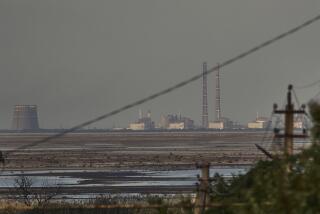Livermore National Lab faulted over Lusitania project
Nearly a century after a German torpedo sunk the passenger liner Lusitania, killing nearly 1,200 people, a story about the World War I attack has sent a torpedo of sorts into the belly of Lawrence Livermore National Laboratory.
The Energy Department’s inspector general scolded the nuclear weapons lab this week over $81,746 worth of research the lab conducted for a National Geographic documentary on why the Lusitania sank within 20 minutes of being hit in 1915.
The inspector general found that the lab improperly used its licensing and royalty fees to conduct testing at its high-explosive facilities for the National Geographic report and erred in doing work that could be performed by the private sector, a possible violation of federal rules.
The “funds expended on this project did not conform with established restrictions that limited its use to legitimate and mission-related scientific research, development, technology transfer and education at LLNL,” the report said.
A spokeswoman for the lab said National Geographic did not pay for the research. [Updated, 1:10 p.m., Feb. 5: “We felt there was educational value to the project,” Lynda Seaver said, noting that National Geographic is a nonprofit.]
The inspector general’s memorandum stopped short of finding that the lab had violated the law, but said it created the appearance of improper activity.
The lab, which was founded to design nuclear weapons after World War II, has been trying over the last decade to diversify and find new clients for its scientific and engineering expertise. Among other things, the lab has focused on homeland security technology.
Located in the Bay Area city of Livermore, the lab derives 62% of its $1.5-billion budget from nuclear weapons work.
In its formal response to the report, the Energy Department concurred with the inspector general’s findings. But a statement issued by the lab’s public affairs office defended the work on the Lusitania project.
“The laboratory believes it followed the correct procedures for working on the modeling and simulation in support of the National Geographic documentary on the sinking of the Lusitania,” the statement said. If not, it said, the lab will “take corrective actions.”
[For the record, 3:20 p.m. Feb. 5: An earlier version of this post said nearly 2,000 people died when the Lusitania sank. Actually, the death toll was about 1,200; more than 760 survived.]
ALSO:
Gay marriage battle unfolds in Virginia, Utah courts
National Guard recruiting bonus scandal probed by Senate panel
Super Bowl prostitution sweep rescues 16 teens; 45 suspects arrested
More to Read
Start your day right
Sign up for Essential California for news, features and recommendations from the L.A. Times and beyond in your inbox six days a week.
You may occasionally receive promotional content from the Los Angeles Times.







